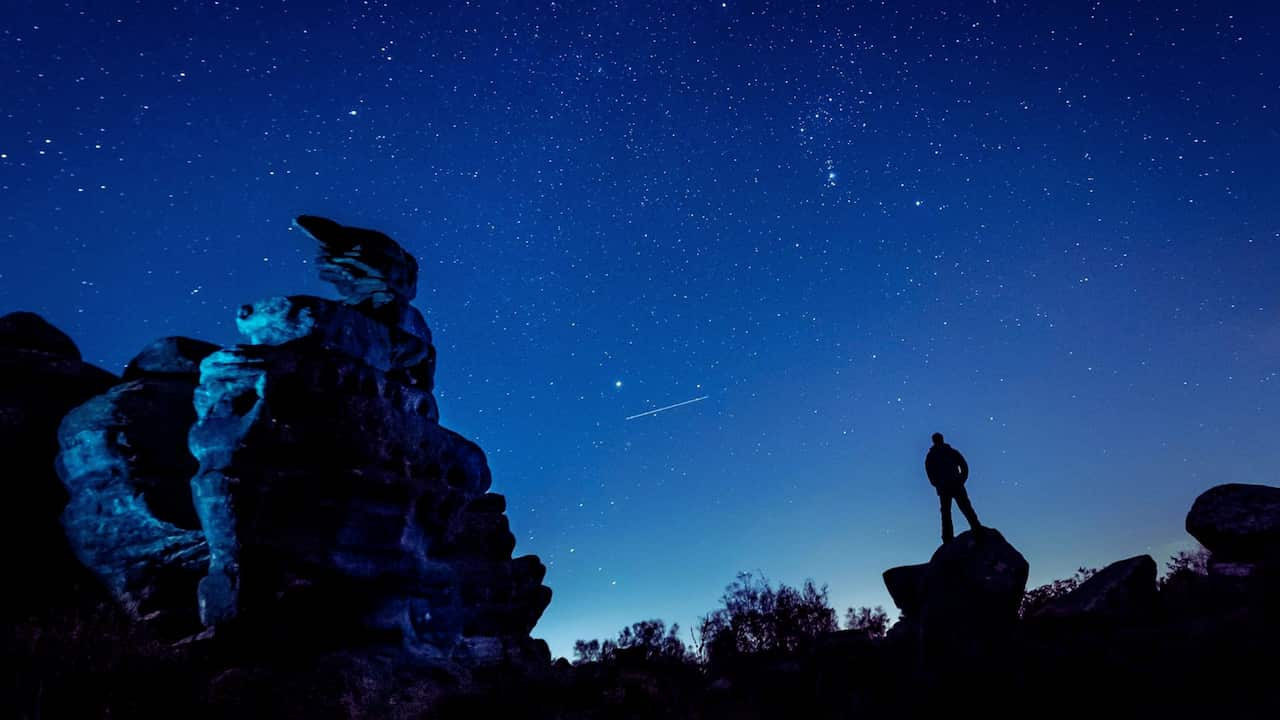Cosmic Spectacle: Orionids Light Up October Sky
As a news reporter, I’m excited to bring you the latest on an upcoming celestial event that’s sure to dazzle stargazers across the globe. This weekend marks the peak of the annual Orionid meteor shower, providing a mesmerizing display of “shooting stars” for those brave enough to brave the night air.
Where and when should I attend the show?
The Orionids will be visible from both hemispheres, with peak activity expected on Sunday, October 20, and Monday, October 21. For the best viewing experience, find a dark spot away from city lights between midnight and dawn. Face southeast in the Northern Hemisphere or northeast in the Southern Hemisphere.
While the shower is active from late September through November, this weekend offers the highest concentration of meteors. On a clear night, you might spot 20 to 30 meteors per hour streaking across the sky.
The celestial dance has been evolving for billions of years
The Orionids have a fascinating origin story. These meteors are actually tiny bits of debris left behind by the famous Halley’s Comet. As Earth passes through this cosmic trail each year, the particles burn up in our atmosphere, creating bright streaks of light.
Halley’s comet itself only visits Earth every 75–76 years, with its next appearance due in 2061. But the Orionids give us an annual reminder of this cosmic wanderer.
Tips for optimal viewing
To maximize your meteor-spotting chances:
- Find a dark location away from light pollution.
- Give your eyes at least 30 minutes to adjust to the darkness.
- Dress warmly and bring a comfortable chair or blanket.
- Avoid looking at your phone or other bright screens.
- Be patient—the longer you watch, the more meteors you’re likely to see.
A cosmic speed show
What makes the Orionids special is their speed. These meteors zip into Earth’s atmosphere at a blistering 148,000 miles per hour (238,000 km/h). This velocity often results in long, glowing “trains” that can linger in the sky for several seconds after the meteor itself has faded.
Some Orionids can even become fireballs, appearing as exceptionally bright meteors that light up the entire sky for a brief moment.
The science behind the spectacle
When we see a “shooting star,” we’re actually witnessing a tiny piece of space rock—often no bigger than a grain of sand—burning up as it enters Earth’s atmosphere. Friction’s intense heat generates the observed streak of light.
The Orionids get their name from the constellation Orion, as the meteors appear to radiate from a point near this well-known star pattern. However, you don’t need to focus solely on Orion to see the meteors. They can appear anywhere in the sky.
Competing with moonlight
One challenge for Orionid watchers this year is the presence of a bright, waning gibbous moon. The moon’s glow may wash out some of the fainter meteors, but patient observers should still be able to spot the brightest ones.
A busy month for sky-watchers
The Orionids aren’t the only celestial show this month. October has already treated us to:
- A dazzling display of the Northern Lights (aurora borealis) is unusually visible far south.
- The bright Tsuchinshan-Atlas comet made its appearance.
- The year’s brightest super moon
- Looking ahead, we can expect more meteor showers to come.
If you miss the Orionids or simply can’t get enough of meteor showers, don’t worry. The cosmic calendar has several more meteor showers scheduled for the remainder of the year.
- Leonids (peak: November 17-18)
- Geminids (peak: December 13-14)
- Ursids (peak: December 21-22)
Each shower has its own unique characteristics, offering different rates of meteors and varying degrees of brightness.
It serves as a reminder of our place in the universe
Meteor showers like the Orionids offer more than just a lovely light show. They connect us to the vastness of space and the dynamic nature of our solar system. As you watch these ancient bits of comet dust burn up in our atmosphere, remember that you’re witnessing a process that has been ongoing for billions of years.
So this weekend, take a moment to step outside, look up, and marvel at the wonders of our universe. The Orionids are waiting to put on a show—all you need to do is watch.
Table of Contents
